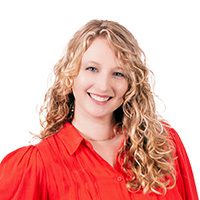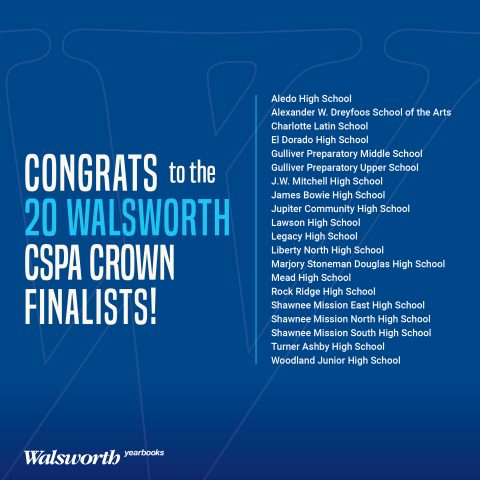As yearbook advisers, photography is at the heart of what you do. Having the right gear makes all the difference in capturing your school’s story. After all, without photos, you don’t have a yearbook. Summer is a time to assess your photography equipment and evaluate what the yearbook program needs to make a great yearbook. Whether you’re replacing cell phone cameras, upgrading sports coverage, adding studio portrait options or transitioning from DSLRs to mirrorless, finding equipment that balances functionality, ease of use and budget is crucial.
Mirrorless cameras are the wave of the future, and they will eventually replace DSLRs the way DSLR replaced film cameras. Mirrorless cameras are lighter, faster, offer advanced autofocus features and can have better ISO management, making them a top choice for low-light photography. The good news? There’s a great mirrorless option out there for every adviser, program and price point. And if you have a closet full of DSLRs you’ve already invested in, we’ve got you covered for that too!
Here’s a scenario-based guide to help you choose the best camera setup for your yearbook program, with reliable options from Canon, Nikon and Sony at both budget-friendly and high-end levels so you can pick your own photo adventure.
SCENARIO 1: Basic Cameras for New Advisers, Middle School Advisers or Cell Phone Bans
If you need camera recommendations because…
- Your school is banning cell phones next year even for the yearbook staff, and you need simple, reliable cameras students can use for candids and interviews,
- You are a brand-new yearbook adviser looking for something simple because you know nothing about cameras and are overwhelmed with all the options,
- You are a middle school adviser (class or club) needing something easy for staffers to use that won’t overwhelm them,
- You don’t have a big budget but do need simple, affordable, new cameras that won’t confuse your kids.
Then here are some great options for you!
Budget-Friendly Options
- Canon EOS R100 (with RF-S 18-45mm lens) – $480
- Nikon Z30 (with 16-50mm lens) – $650
- Sony ZV-E10 (with 16-50mm lens) – $800
Bells & Whistles Options
- Canon EOS R50 (with RF-S 18-45mm lens) – $800
- Nikon Z50 (with 16-50mm lens) – $850
- Sony Alpha a6400 (with 16-50mm lens) – $900
These compact cameras are easy for students to learn and provide better autofocus, image quality and low-light performance than phones without overwhelming first-time photographers or breaking the bank.
SCENARIO 2: Experienced Photographer, Upgrading Sports Photography Gear
If you need camera recommendations because…
- Your program’s growing, and you are ready to improve sports and action photography with a goal of fast burst rates, great subject tracking and a solid telephoto lens,
Then here are some great options for you!
Budget-Friendly
- Canon EOS R50 (with RF-S 55-210mm telephoto lens) – $1,100
- Nikon Z50 (with 50-250mm VR lens) – $1,150
- Sony Alpha a6400 (with 55-210mm lens) – $1,100
Bells & Whistles
- Canon EOS R7 (with RF 70-200mm f/2.8 or RF 100- 400mm) – $1,400 body + $650-$2,600 lens
- Nikon Z6 II (with 70-200mm f/2.8 or 100-400mm) – $2,000 body + $2,600 lens
- Sony Alpha a6700 (with 70-350mm f/4.5-6.3 G OSS lens) – $1,400 body + $1,000 lens
But Those Lenses…
You might be asking, “Okay, but what if I have plenty of good cameras but my lens game is weak?”
Not everyone can afford a $2,600 lens. If you want a hack to make your yearbook dollar stretch, buy a used DSLR lens (you can get them cheap these days) with an adapter that pairs the mirrorless camera with the DSLR lens.
Example using KEH.com used prices:
- Canon EOS R7 – $1,400 + 70-200mm f/2.8 EF-mount lens – $1,000 + EF to RF lens mount adapter – $129
TOTAL= $2,529
The same example setup using all RF-mounted equipment purchased brand new:
- Canon EOS R7 – $1,400 + 70-200mm f/2.8 EF-mount lens – $2,600
TOTAL= $4000
Here are some great telephoto sports lenses to consider:
- Canon RF 70-200mm f/2.8L IS USM – $2,600
- Fast, sharp, pro-grade image stabilization; lightweight for a 70-200mm.
- Canon RF 100-400mm f/5.6-8 IS USM – $650
- Budget-friendly long zoom for daylight sports
- Nikon Z 70-200mm f/2.8 VR S – $2,600
- Tack-sharp, excellent stabilization, ideal for night games or gym sports
- Nikon Z 100-400mm f/4.5-5.6 VR S – $2,700
- Long reach for field sports like football and soccer
- Sony 70-350mm f/4.5-6.3 G OSS – $1,000
- Incredible zoom reach for an APS-C body (like the a6400 or a6700)
- Sony 70-200mm f/2.8 GM OSS II – $2,800
- One of the fastest, sharpest sports lenses on the market
NOTE: Also consider shorter range lenses like a 24-70mm f/2.8 or 24-105 f/2.8 lens. Canon, Nikon and Sony all carry lenses in this zoom range.
These lenses will be great for volleyball, basketball, group shots and sideline photography.
SCENARIO 3: Adviser with Solid Program, Expanding into Portrait/Studio
If you need camera recommendations because…
- You’re adding formal portraits, studio work or senior features and want high-quality equipment, sharp lenses and dependable Eye-Detect auto- focus,
Then here are some great options for you!
Budget-Friendly
- Canon EOS R50 (with RF 50mm f/1.8) – $800 body + $180 lens
- Nikon Z50 (with Z 50mm f/1.8 S) – $850 body + $630 lens
- Sony ZV-E10 (with Sigma 30mm f/1.4 DC DN) – $800 body + $270 lens
Bells & Whistles
- Canon EOS R8 (with RF 50mm f/1.8 or RF 85mm f/1.8) – $1500 body + $180–$600 lens
- Nikon Z6 II (with Z 85mm f/1.8 S) – $2000 body + $800 lens
- Sony Alpha a7 IV (with Sony 85mm f/1.8) – $2500 body + $600 lens
What About Lighting Equipment?
Lighting equipment plays a significant role in the overall quality of your photos. If you want to level up your photography, these items can help.
Lighting:
- Godox SL-60W continuous LED light – $140 or
- Neewer 660 LED Panel Kit – $190 for 2-light kit
Continuous lighting is easier for students to use than strobes and helps with consistent exposure.
Light Modifiers:
- Softbox (24”or 36”) for each light – $50 – $80 each
This will soften shadows and make portraits more flattering.
Backdrop:
- Collapsible backdrop (white/gray/black reversible) – $100 OR
- Seamless paper (Savage or Superior brand, 53” or 107” width) – $80-$120 per roll
This provides a clean consistent background for portraits or club photos.
Tripod:
- Manfrotto Compact Action or Neewer Aluminum Tripod – $80 – $150
A tripod keeps framing consistent and avoids camera shake.
Tethering Cable:
- Tether Tools USB-C or Micro USB cables – $30 – $40
A tethering cable connects your camera directly to a laptop or desktop for real-time review of portraits. While this optional item will not change your photos, it is a convenient feature at a low price point.
Reflector/Diffuser:
- 5-in-1 collapsible reflector – $30
This will fill light under chins, soften shadows or block light for creative effects.
SCENARIO 4: Adviser Wants to Expand into Mirrorless but Still Use Current DSLR Lenses
If you need camera recommendations because…
- You are ready to modernize your workflow with a mirrorless camera, but your yearbook program already invested in a set of DSLR lenses (Canon EF, Nikon F, or Sony A-mount) and you don’t want to abandon your existing lenses yet,
I have good news! Any of the Canon, Nikon or Sony mirrorless cameras recommended above will pair well with your existing DSLR glass using brand-specific adapters. This allows you to upgrade your camera bodies for faster autofocus, better low-light performance and advanced eye-tracking while preserving your investment in quality lenses.
Adapter Recommendations and Pricing
Canon:
o Canon EF-EOS R Mount Adapter – around $140
Maintains full autofocus and metering with EF and EF-S lenses.
Nikon:
o Nikon FTZ II Mount Adapter – around $150
Full compatibility with most AF-S and AF-P lenses. Older screw-drive autofocus lenses (AF-D) will function manually.
Sony:
o Sony LA-EA5 A-mount to E-mount Adapter – around $250
Supports most modern Sony A-mount lenses with full autofocus on newer mirrorless bodies. Note: autofocus limitations may apply with older lenses.
PRO TIP: Purchase the adapter from the manufacturer. Don’t go off-brand for this item. Before purchasing adapters, double-check compatibility between your specific lens models and the adapter via the manufacturer’s website or B&H/Adorama compatibility charts. If your lenses are third-party (Sigma, Tamron, Tokina, etc.), test them with the adapter before committing to a full program switch to ensure consistent autofocus and metering.
Final Thoughts for Advisers
Even with a great camera and lenses, a few tips will make a huge impact. I recommend that you:
- Invest in extra batteries. Mirrorless cameras use more power than DSLRs.
- Double check what kind of memory card your new camera needs. There are new memory cards out there for specific levels of mirrorless cameras.
- Prioritize lens quality for sports and portraits. Even a modest body paired with a great lens makes a huge difference.
- Train students on basic handling and safety. Mirrorless cameras have sensitive sensors exposed when changing lenses.
- Consider gear insurance or protection plans. Student-use cameras see heavy wear.
Now go out and give it your best shot!





